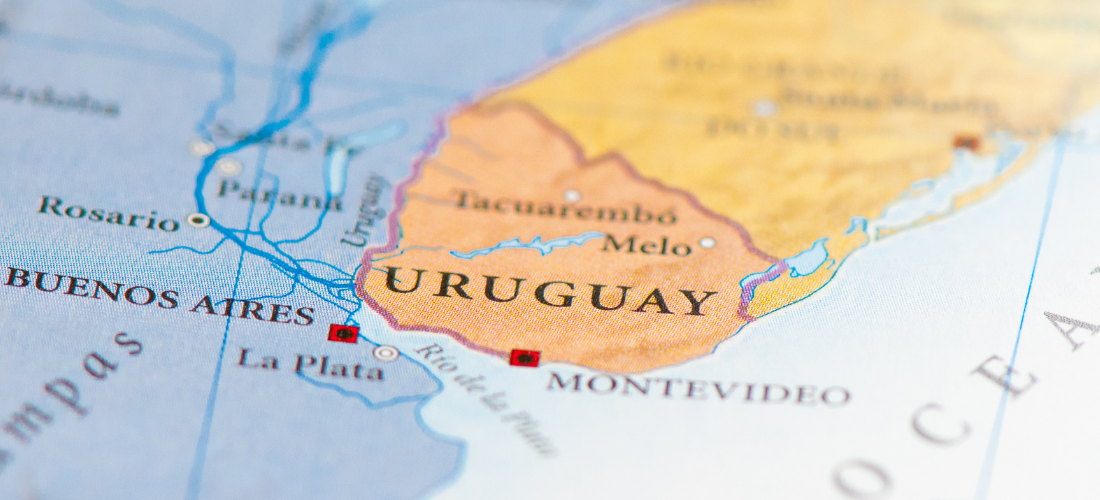
Uruguay’s exports could be less dynamic in 2025 due to stagnation of cellulose and soybeans
Oct, 01, 2024 Posted by Gabriel MalheirosWeek 202439
Uruguayan exports are on track to close the year with positive growth, driven by the good performance of soybeans and cellulose.
However, it will be difficult for both products to achieve better results in 2025 and that – added to the fact that the rest of the export supply is stagnant – suggests a slowdown in foreign sales.
Soybean sales in 2023 had the worst result in recent years, including in 2020 when they decreased due to the impact of COVID-19 on activity. The product fell to eighth place, this time affected by the drought that plummeted production.
The 2021/2022 harvest had exceeded 2.7 million tons, sales reached US$ 1,915 million and contributed to a record of exports of Uruguayan goods, with more than US$ 13 billion.
But the numbers for 2023 fell dramatically: the harvest reached 700,000 tons and sales plummeted to US$ 414 million. The year-on-year drop was 78%.
The drought is over and soybeans have begun to recover in 2024. In the first eight months of the year, soybean sales reached US$879 million, with a year-on-year recovery of 195%, according to information from the Uruguay XXI Institute.
The good result was based on the export volume, as international prices registered a decrease of 18%.
The pulp industry is experiencing a period of dynamism following the start of operations of UPM’s second pulp mill located in Pueblo Centenario in April last year.
For this year, the factory is expected to achieve a production of 2.1 million tons and provide 35% of cellulose for sale abroad.
Thus, with the two Finnish plants and the Montes del Plata plant in Colonia, the production ceiling of 4.8 million tonnes per year will be reached.
Last year, exports reached US$ 2,019 million, ranking second behind beef.
In the first eight months of this year, exports amounted to US$ 1.607 billion, with a year-on-year increase of 34%. During this period, cellulose was the first exported product and the projection is that it will continue in that position at the end of the year.
In terms of container trade, other commodities have gained prominence in Uruguay. The chart below reveals some of the top goods traded in containers shipped through maritime long-haul ports in the first eight months of 2024. The data comes from DataLiner.
Uruguay Top Container Exports | Jan 2024 – Aug 2024 | TEUs
Source: DataLiner (click here to request a demo)
FORECAST AND BRAKE OF EXPORTS
Last year’s exports ended in decline precisely because of the poor performance of soybeans.
However, the estimate for this year is that -with the recovery of the seed plus the maximum production of cellulose- they will recover the levels of 2022.
In an activity organized by Banco Itaú, economist Alfonso Capurro recalled that the Gross Domestic Product (GDP) grew 3.8% in the second quarter compared to the same period last year. One of the reasons was the increase in exports. Between April and June, the increase was 14%.
The National Accounts report of the Central Bank (BCU) highlighted transactions in soybeans, cellulose, beef and electricity. In the first eight months of 2024, the increase was the same.
Capurro clarified that excluding soybeans and cellulose, growth was actually 2.5% in that period.
Something similar can be observed in the period between January and August. In 2024, operations (excluding soybeans and cellulose) reached US$ 6,054 and in 2023 they were US$ 5,967, with a positive variation of 1.5%.
“Today, exports are growing due to temporary effects, but the rest is not growing. There is virtual stagnation when these effects are removed. It is not about showing worrying data; one simply has to think about where exports are going next year,” said Capurro.
The economist explained that there will be no rebound in cellulose next year because the boost -due to the second UPM plant- has already occurred and production is currently at maximum capacity. This will not happen with soybeans either, since there will be no damage due to drought.
The outlook for next year is therefore not optimistic. Capurro estimated that foreign sales will lose momentum, something that will also be reflected in economic activity.
Another problem on the horizon is international soybean prices.
Exante economist Delfina Matos said a few days ago on the En Perspectiva program that current values are the lowest since 2020.
He added that for the 2024/2025 harvest, prices are below US$ 400 per ton and that futures contracts on the Chicago Stock Exchange do not show significant increases for next year.
“This creates a much more challenging scenario in terms of profitability for the next harvest,” he said.
Capurro said that the drop in soybean prices will add an additional challenge for agriculture, one of the most important sectors of the export sector.
Source: America Economia
-
Dec, 21, 2023
0
China ranks 1st among sugar export destinations through the Port of Santos
-
Automotive
Jan, 11, 2022
0
Road equipment industry grows in 2021 and returns to normal standing
-
Shipping
Aug, 14, 2024
0
Ship in Red Sea attacked 3 times; Houthis suspected
-
Automotive
Sep, 04, 2023
0
Port of Vila Velha announces new service to import electric cars from China

